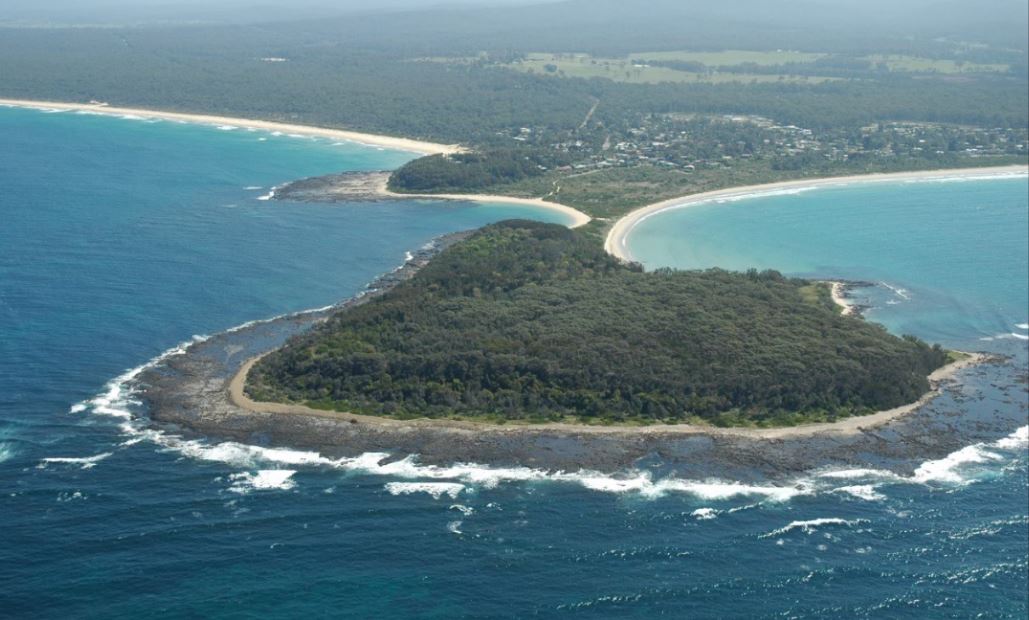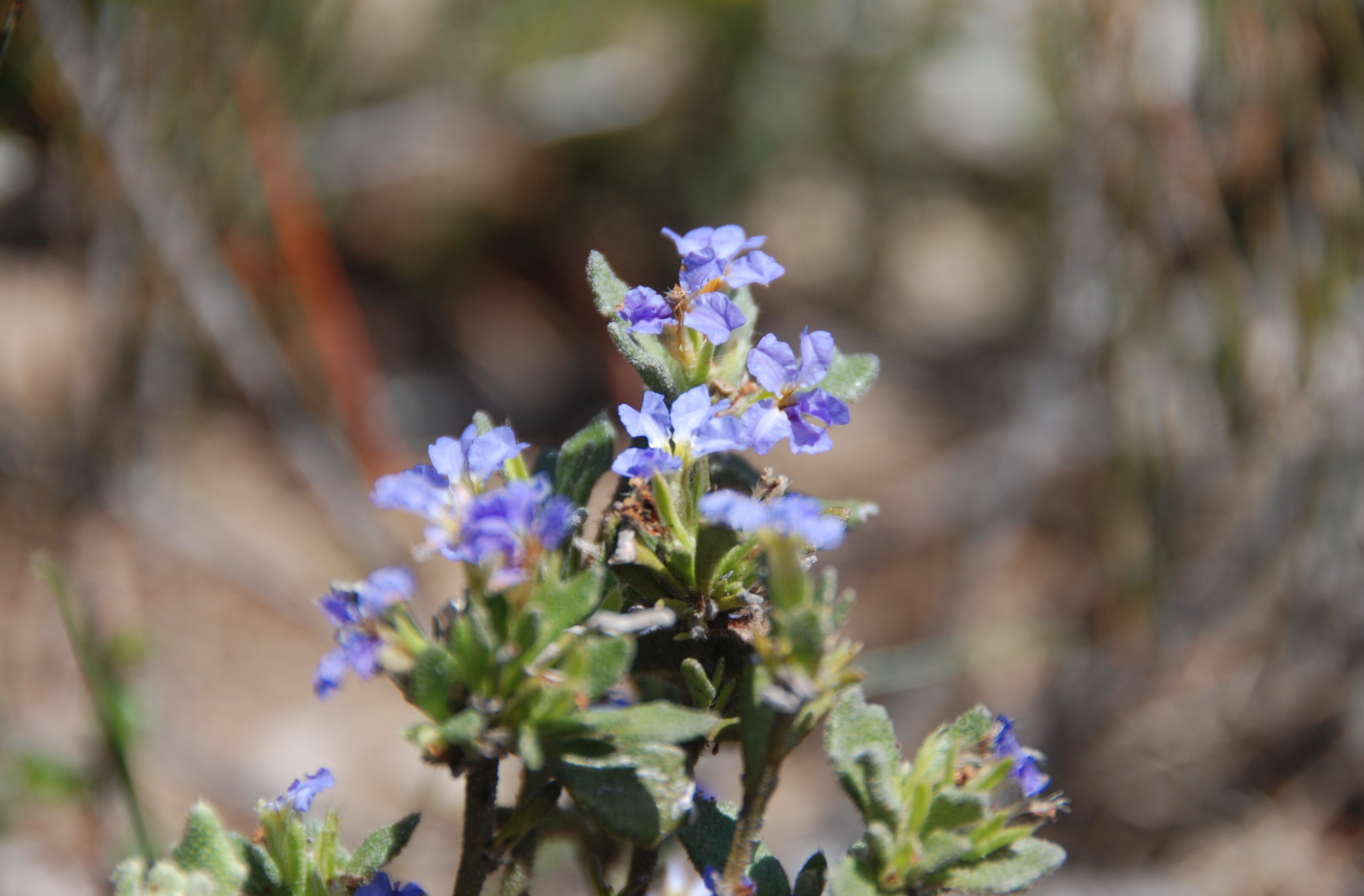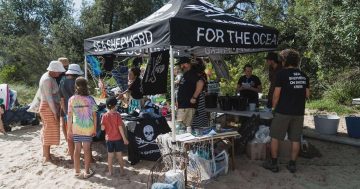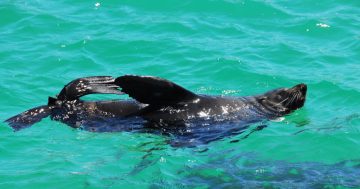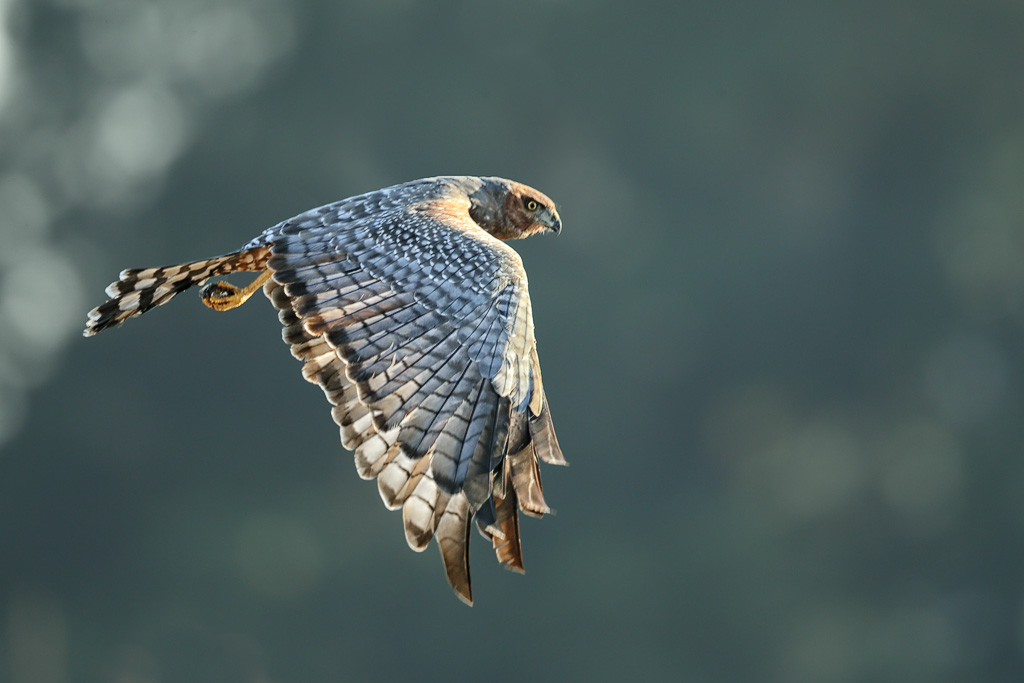
A Spotted Harrier, more common in western NSW was spotted at Candelo during the summer of 2017/18. Photo: Leo Berzins.
Summer is nature’s peak season in South East NSW. Fauna and flora look to those warm rays from the sun to flourish and keep their species going.
Survival of the fittest means something new in these days of rapid environmental change; creatures of feather, fur, and fin are responding differently to those influences, and it’s often something that can be witnessed first hand.
With the first licks of winter being felt at dawn and dusk, a report card on the summer of 2017/18 was released by those observing the local environment at close quarters.
Sham Eichmann, is the Acting Manager of the Batemans Marine Park, for the NSW Department of Primary Industries. She says the long-spined sea urchin (Centrostephanus rogersii) has been one to watch over summer as the impacts of sea urchin barrens become more widely noticed within the Batemans Marine Park.
“Long-spined sea urchins are a native species on the east coast of Australia,” Ms Eichmann says.
“Small barren areas are part of the natural marine ecosystem and have been found to provide benefits to smaller cryptic fish species. Not all barren areas can be considered ‘bad’ for the marine environment.
“There is concern that the barrens are expanding more rapidly and are detrimentally impacting a range of social, economic, and environmental values within the marine park.
“The scale of this change and its causes are unknown,” Ms Eichmann says.

Long Spined Sea Urchins and the barrens that create are being studied in the Batemans Marine Park. Photo: DPI.
For the time, the Department of Primary Industries is asking that people don’t take matters into their own hands and begin killing urchins.
Many species of sea urchins inhabit local waters including red, green, and slate pencil urchins, which play an important role in the biodiversity of reef systems.
In NSW a bag limit of 10 sea urchins applies to all species, and urchins can only be taken by hand. Hammers, mattocks, chisels, small spades, and screwdrivers must not be used to kill sea urchins.
Sanctuary zones within the Batemans Marine Park are no-go areas for urchin collection. Download the Fish Smart App to learn all the rules of fishing within the park.
Ms Eichmann says urchin barrens will continue to be studied by the Department and university researchers.
The other feature of the local summer just gone was a combination of king tides and very hot temperatures, which led to a fish kill at Shark Bay, Broulee over the Australia Day long weekend as temperatures spiked towards 40 degrees.
“Marine Park staff attended the site and determined the fish kill was due to a pulse of nutrients into the system,” Ms Eichmann says.
In the lead-up, big swells had washed a large amount of seaweed on to the beach and into rock pools, the fatal rush of nutrients flowed into the system as the overwhelming amount of seaweed started to break down in the extreme heat.
On the flip side, summer saw some good fish catches according to the Marine Park’s Acting Manager.
“Particularly Jewfish in the Clyde River, and DPI is investigating claims that Jewfish numbers are increasing within the Marine Park,” Ms Eichmann says.

Little Terns at Mogareeka, near Tathra. Photo: Leo Berzins
Bird movements also point to the changing seasons. As I sit here tapping away, Gang Gang Cockatoos are settling into the bush outside, the birds move down from the high country each autumn ahead of the approaching cold.
Far South Coast Birdwatchers meet regularly in different locations to spy on and track bird activity in the region. Twitcher Leo Berzins says the past summer has not been a good one for beach-nesting birds.
“There are currently ten breeding pairs of Hooded Plovers in the Bega Valley Shire. These birds are critically endangered in NSW,” he says.
“Unfortunately, only one chick made it all the way through to fledging this summer.
“It takes five weeks from hatching through to fledging, predators include foxes, ravens, gulls, and goannas and on some beaches, domestic dogs are also a threat,” he says.
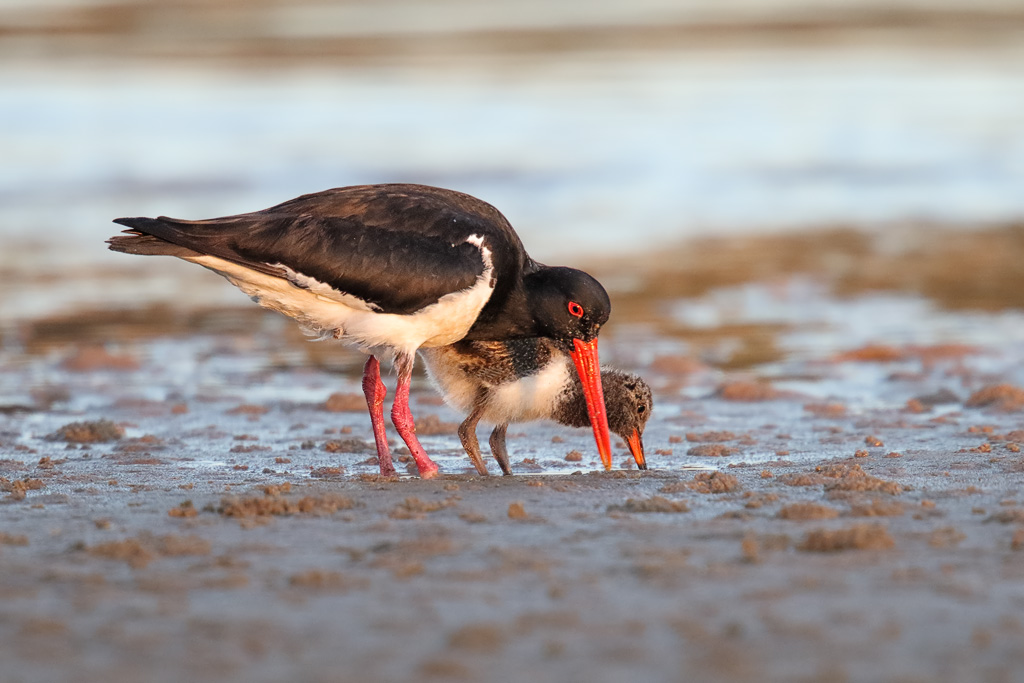
Pied Oystercatchers raised at least ten fledglings in 17/18, including this one at Mogereeka. Photo: Leo Berzins.
Pied Oystercatchers fared somewhat better with at least ten fledglings, including one at busy Short Point in Merimbula. These birds are listed as Endangered in NSW.
“Another endangered bird that nests on beaches in our region is the Little Tern,” Mr Berzins explains.
These birds arrive in late October to establish breeding colonies before departing in early February.
“The most reliable nesting location is at Mogareeka, near the Bega River mouth. Another location used this summer was Bird Island in Lake Wallagoot, where some thirty nests were established before being decimated by gulls,” Mr Berzins says.
Following the loss of this colony, many of the birds seemed to move up to Mogareeka to nest again.
“Only ten or so chicks made it through to fledging, well down on recent years. The main threats were again foxes, gulls, and ravens,” he says.

A Red-Capped Plover, raising young at Tathra in the summer of 17/18. Photo: Leo Berzins.
One beach-nesting bird that is not yet endangered continues to breed successfully.
“The little Red-Capped Plover is better at concealing its nest than other hoodies and sometimes succeed out in the open at a busy location such as Tura Beach,” Mr Berzins says.
Another positive was the sighting of a number of Beach Stone-Curlews; it’s rare to see them this far south but Mr Berzins says sightings have increased in the last couple of years, especially at Spencer Park Merimbula, Whale Spit in Twofold Bay, Mogareeka, and at Bithry Inlet.
“The question remains whether there are more Curlews in the region or whether the same birds are being sighted in different locations at different times of the year,” Mr Berzins says.
Away from the beach, some uncommon birds were observed over the summer of 2017/18.
“Two raptor species, birds of prey, a Black Kite at Tanja and a Spotted Harrier near Candelo,” he says.
“These birds are much more common further inland and are not often seen in the south-east. Possibly dry conditions further west drove the birds further afield in search of food.”
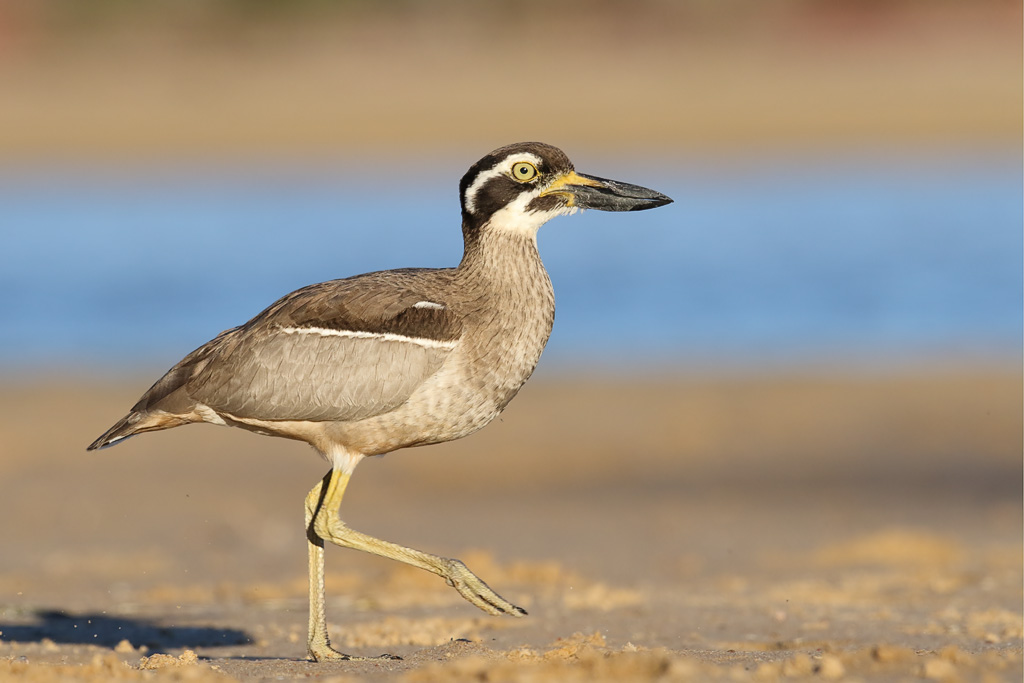
The Beach Stone-Curlew has been spotted at Spencer Park Merimbula, Whale Spit in Twofold Bay, Mogareeka, and at Bithry Inlet. Photo: Leo Berzins.
Summer in South East NSW bloomed according to the National Parks and Wildlife Service.
Local rangers spent a lot of time in the field surveying and monitoring the unique plants and animals that call this place home, as part of the “Saving our Species” program.
“Some of the region’s most threatened species burst into flower over the warmer months,” a National Parks spokesperson says.
Researchers from the NSW Office of Environment and Heritage spent summer collecting seeds from a range of plants across a large area, from the mountains to the sea, including Wadbilliga National Park, South East Forests National Park, Bournda Nature Reserve, and Tinderry Nature Reserve, west of Batemans Bay.
“Seed was collected during the peak flowering period of each species, which included Parris’ Bush-pea (Pultenaea parrisiae), Merimbula Star-hair (Astrotricha sp. ‘Wallagaraugh’), Kydra Dampiera (Dampiera fusca) and Genoa River Correa (Correa lawrenceana var. genoensis),” the spokesperson says.
This work is one of hundreds of projects the Saving our Species program is undertaking, with the aim of ensuring the long-term future of threatened species in NSW.
“We work with the Australian National Botanic Gardens in Canberra, and the Australian Botanic Garden at Mount Annan to safely store the seed and undertake germination trials.”
“This seed collection work often involves travelling to remote locations for field work and many hours of searching for very small and difficult to find plants.
“We collect the seed firstly to provide some insurance against threats to the remaining populations, and secondly to see what makes the seed germinate, to help with future management plans,” the National Parks spokesperson says.
Did you notice anything interesting in nature around your place over summer? Please share your experience below.
#This article first appeared on RiotACT


